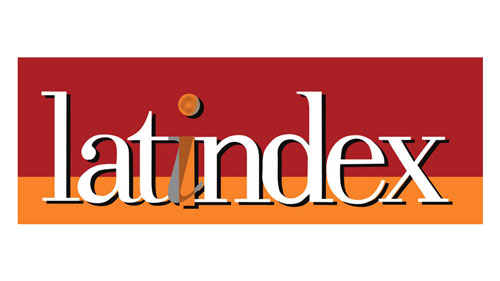Relações psicotipológicas com base no ponto de vista de multilíngues falantes de português (L1), inglês (L2) e alemão (L3)
DOI:
https://doi.org/10.26512/rhla.v19i2.32993Palabras clave:
multilinguismo, tipologias linguísticas, psicotipologiaResumen
O objetivo deste estudo foi identificar a percepção de multilíngues falantes de português (L1), inglês (L2) e alemão (L3) sobre as relações psicotipológicas entre essas línguas. Com base nos trabalhos desenvolvidos por Hall et al. (2009), Lindqvist (2015) e Sánchez e Bardel (2016), um questionário de cunho psicotipológico foi elaborado. A utilização da tarefa considerava relações ortográficas, fônico-fonológicas e gramaticais que se estabelecem entre as línguas. Como hipóteses para o trabalho, considerávamos que os participantes avaliariam o par de línguas inglês-alemão, em termos gerais, como mais semelhante. Em relação aos aspectos ortográficos, presumíamos que o par português-alemão seria entendido como distante. Ainda, acreditávamos que em termos fônico-fonológicas, a combinação inglês-alemão fosse escolhida como mais próxima pelos participantes. No que tange à gramática das línguas, o par português-inglês seria compreendido como o mais próximo. Após a coleta e a análise dos dados obtidos, os resultados indicaram que as hipóteses levantadas condiziam com a maior parte das avaliações feitas, sendo a única exceção referente à s regras sintáticas das línguas. De acordo com os participantes, a combinação inglês-alemão apresenta maiores semelhanças sintáticas e não o par português-inglês.
Descargas
Citas
BRITO, K. S. Influências interlinguísticas na mente multilíngue: perspectivas psicolinguísticas e (psico)tipológicas. 2011. 274 f. Tese (Doutorado em Estudos Linguísticos) ”“ Programa de Pós-Graduação em Estudos Linguísticos, Universidade Federal do Paraná, Curitiba, 2011.
BUTLER, Y.; HAKUTA, K. Bilingualism/multilingualism and second language acquisition. In: BHATIA, T. K.; RITCHIE, W. C. (Ed.). The handbook of bilingualism and multilingualism. Hoboken: John Wiley & Sons, 2013. p. 114-144. Disponível em: https://doi.org/10.1002/9780470756997.ch5
CENOZ, J. The influence of bilingualism on multilingual acquisition: some data from the Basque Country. In: Anais do Simpósio Internacional sobre o Bilinguismo, Universidade de Vigo, 21-25 de outubro, 1997, p. 278-287.
CENOZ, J. The influence of bilingualism on third language acquisition: Focus on multilingualism. Language Teaching, v. 46, n. 1, p. 71-86, 2013.
Disponível em: https://doi.org/10.1017/S0261444811000218
CROFT, W. Typology and universals. London: Cambridge University, 2003. Disponível em: https://doi.org/10.1017/CBO9780511840579
CRYSTAL, D. From the world to the word ”“ and back again. Disponível em: Disponível em: http://www.davidcrystal.com. Acesso em: 31 out. 2019.
DE ANGELIS, G. Third or additional language acquisition. Dublin: Multilingual Matters, 2007. Disponível em: https://doi.org/10.21832/9781847690050
DUDEN. Die Grammatik: Unentbehrlich für richtiges Deutsch. Mannheim: Dudenverlag, 2005.
EBERHARD, D. M.; SIMONS, G. F.; FENNIG, C. D. (Ed.). Ethnologue: languages of the world. Twenty-third edition. Dallas: SIL International. Disponível em: http://www.ethnologue.com. Acesso em: 30 jul. 2020.
GROSJEAN, F. Bilinguismo individual. Tradução de Heloísa Augusta Brito de Mello e Dilys Karen Rees. Revista UFG, ano X, v. 5, p. 163-176, 2008.
HALL, C.; NEWBRAND, D.; ECKE, P.; SPERR, U.; MARCHAND, V.; HAYES, L. Learners’ Implicit Assumptions About Syntactic Frames in New L3 Words: The Role of Cognates, Typological Proximity, and L2 Status. Language Learning, v. 59, n. 1, p. 153-202, 2009. Disponível em: https://doi.org/10.1111/j.1467-9922.2009.00503.x
KELLERMAN, E. Now you see it, now you don´t. In: GASS, S.; SELINKER, L. (Ed.) Language transfer in language learning. Rowley: Newbury House, 1983. p. 112-134.
LADO, R. Linguistics across cultures. Ann Arbor: University of Michigan Press, 1957.
LANDERL, K.; WIMMER, H.; FRITH, U. The impact of orthographic consistency on dyslexia: A German-English comparison. Cognition, v. 63, n. 3, p. 315-334, 1997.
Disponível em: https://doi.org/10.1016/S0010-0277(97)00005-X
LIMBERGER, B. K. Processamento da leitura e suas bases neurais: um estudo sobre o hunsriqueano. 2018. 269 f. Tese (Doutorado em Letras) ”“ Programa de Pós-Graduação em Letras, Pontifícia Universidade Católica do Rio Grande do Sul, Porto Alegre, 2018.
LINDQVIST, C. Do learners transfer from the language they perceive as most closely related to the L3? The role of psychotypology for lexical and grammatical crosslinguistic influence in French L3. In: DE ANGELIS, G.; JESSNER, U.; KRESI, M. (Ed.). Crosslinguistic influence andcCrosslinguistic interaction in multilingual language learning. London: Bloomsbury Academic, 2015. p. 231-251.
LURAGHI, S. Typology and historical linguistics. In: AIKHENVALD, A.; DIXON, J. (Ed.). The Cambridge Handbook of Linguistic Typology. Cambridge: Cambridge University Press, 2017, p. 95-123. Disponível em: https://doi.org/10.1017/9781316135716.004
MCARTHUR, T. Multilingualism. In: MCARTHUR, T. The Oxford Companion to the English Language. Oxford: Oxford University Press, 1992. p. 673.
MORAVCSIK, E. Introducing language typology. Cambridge: Cambridge University Press, 2013. Disponível em: https://doi.org/10.1017/CBO9780511978876
MOZZILLO, I. A conversação bilíngue dentro e fora da sala de aula de língua estrangeira. In: HAMMES, W.; VETROMILLE-CASTRO. R. (Org.) Transformando a sala de aula, transformando o mundo: ensino e pesquisa em língua estrangeira. Pelotas: Educat, 2001. p. 289-325.
OLIVEIRA, G. M. Plurilinguismo no Brasil. Brasília: Representação da Unesco no Brasil/Ipol, 2008. Disponível em: http://unesdoc.unesco.org/images/0016/001611/161167por.pdf. Acesso em: 31 out. 2019.
MYERS-SCOTTON, C. Introduction. In: MYERS-SCOTTON, C. (Ed.). Contact linguistics. Oxford: Oxford University Press, 2002. p. 1-29.
Disponível em: https://doi.org/10.1093/acprof:oso/9780198299530.003.0001
SÁNCHEZ, L.; BARDEL, C. Cognitive factors, linguistic perceptions and transfer in third language learning. Revue Française de Linguistique Appliquée, v. 21, n. 2, p. 123-138, 2016. Disponível em: https://doi.org/10.3917/rfla.212.0123
SCHOLL, A.; FINGER, I. Elaboração de um questionário de histórico da linguagem para pesquisas com bilíngues. Nonada: Letras em Revista, v. 2, n. 21, p. 21- 39, 2013.
SHIBATANI, M.; BYNON, T. Approaches to language typology: a conspectus. In: SHIBATANI, M.; BYNON, T. (Ed.). Approaches to language typology. Oxford: Oxford University Press, 1995. p. 01-26.
SZUBKO-SITAREK, W. Beyond bilingualism: issues in multilingualism. In: SZUBKO-SITAREK, W. Multilingual lexical recognition in the mental lexicon of third language users. Springer: London, 2015. p. 01-32. Disponível em: https://doi.org/10.1007/978-3-642-32194-8
TALMY, L. Path to realization: a typology of event conflation. Proceedings of the seventeenth annual meeting of the Berkeley Linguistics Society: general session and parasession on the grammar of event structure, 1991. p. 480-519. Disponível em: https://doi.org/10.3765/bls.v17i0.1620
Descargas
Publicado
Cómo citar
Número
Sección
Licencia
Derechos de autor 2020 Revista Horizontes de Linguistica Aplicada

Esta obra está bajo una licencia internacional Creative Commons Atribución-NoComercial-SinDerivadas 4.0.

A Revista Horizontes de Linguística Aplicada de http://seer.bce.unb.br/index.php/horizontesla/index é licenciado sob uma Licença Creative Commons Atribuição-Uso não-comercial-Vedada a criação de obras derivadas 3.0 Unported.
- Autores mantém os direitos autorais e concedem à revista o direito de primeira publicação, sendo o trabalho simultaneamente licenciado sob a Creative Commons Attribution License o que permite o compartilhamento do trabalho com reconhecimento da autoria do trabalho e publicação inicial nesta revista.
- Autores têm autorização para assumir contratos adicionais separadamente, para distribuição não-exclusiva da versão do trabalho publicada nesta revista (ex.: publicar em repositório institucional ou como capítulo de livro), com reconhecimento de autoria e publicação inicial nesta revista.




